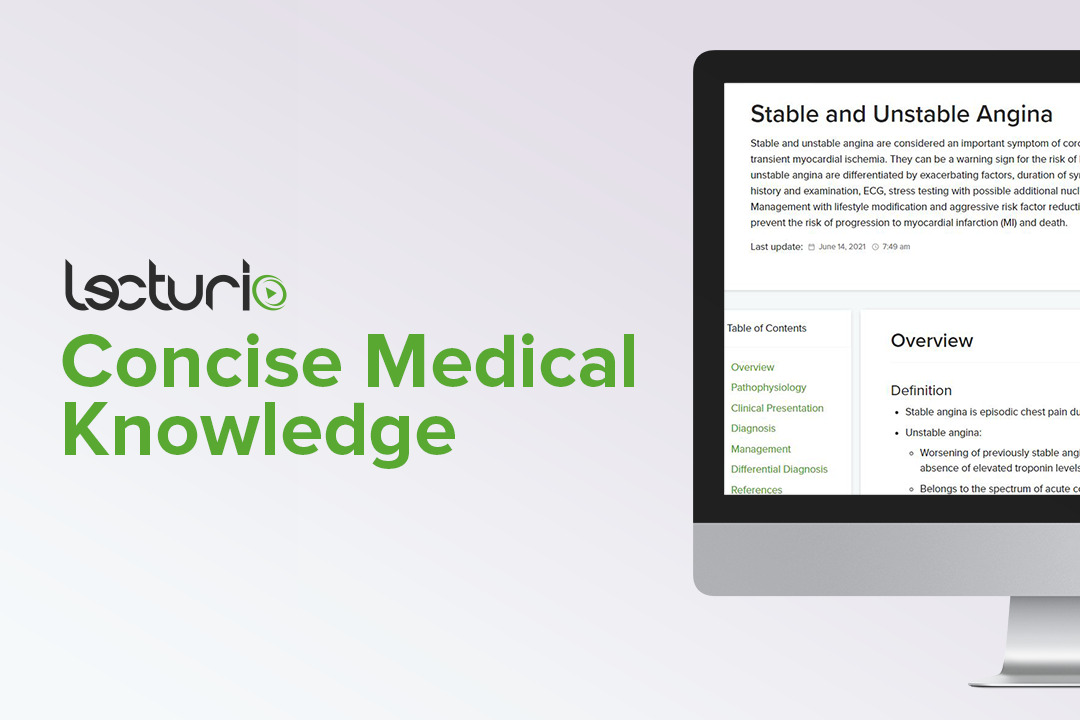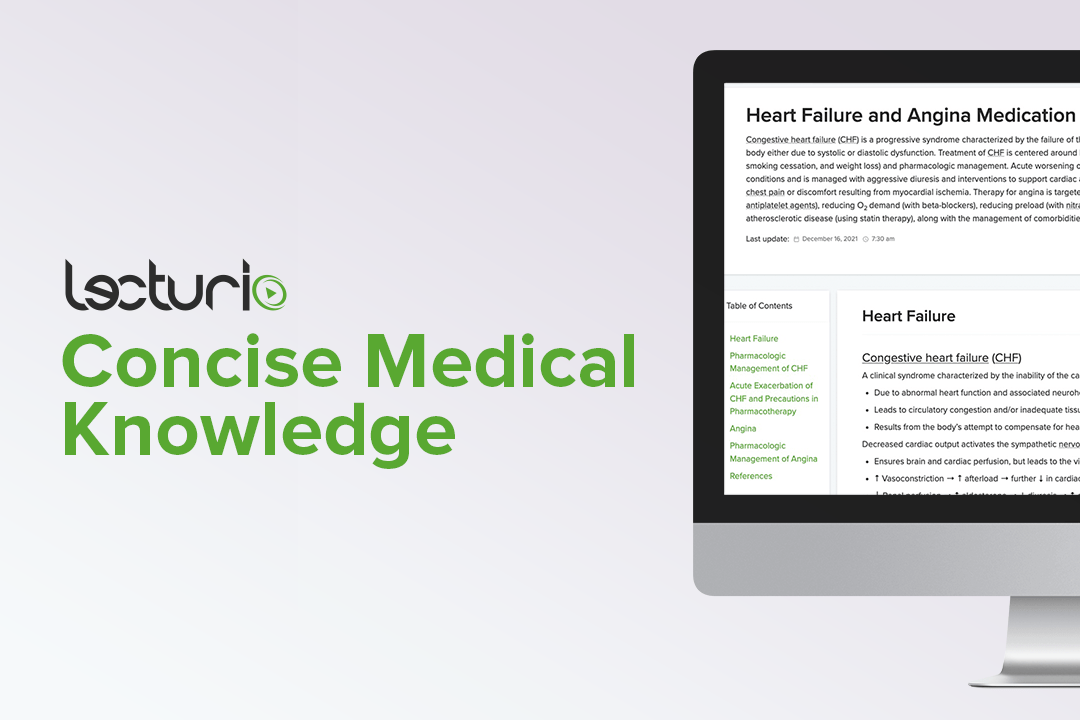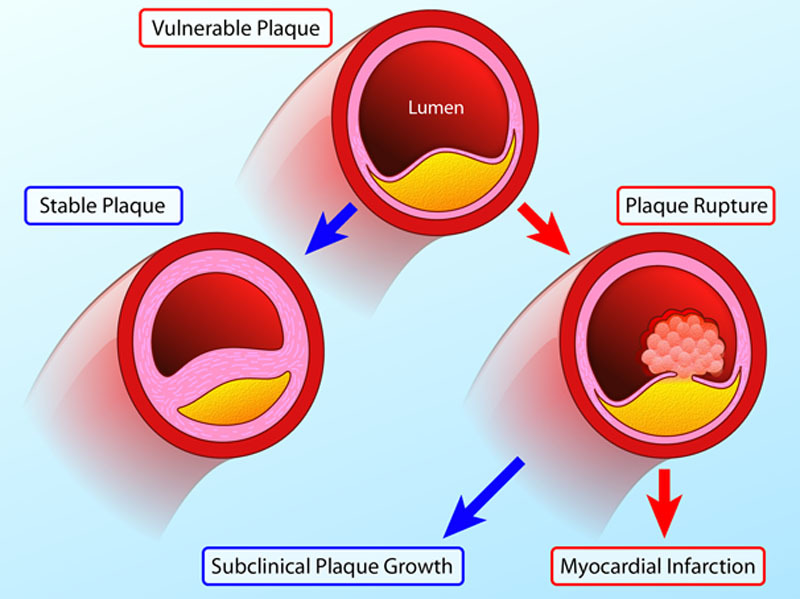Playlist
Show Playlist
Hide Playlist
Management of Angina and Myocardial Infarction: NSTEMI and STEMI Treatment
-
Slides ManagementAngina MyocardialInfarction CardiovascularPathology.pdf
-
Download Lecture Overview
00:01 By decreasing myocardial oxygen demand, we have beta-blockers, slows down the heart rate. Remember the two major factors or components or constituents of your work of the heart demand depended on heart rate and the ability to pump. The heart rate when I try to give a beta-blocker decrease heart rate. Nitrates what they do? Well, we talked about how you could have vascular resistance, which has increased, which it does because of sympathetic activity and so, therefore, nitrates might cause vasodilation. Now you tell me, be careful, how do you decrease your afterload? It is about working on the arteries, arterial side or is about working on the venous side? And you will tell me correctly working on the arterial side. Good. By doing that, you are then relieving some of the resistance, aren’t you? And what about morphine? It decreases the pain and produce the adrenergic drive with morphine. 00:54 What about the supply? Let us give oxygen. I have to give oxygen. What about that clot? It is already too big, so when I try to get in there, get rid of it. You've bust that clot. You call this as a blood thinner and how important is that concept, vary in hemodynamics, all the different ways in which you can bust that clot. Aspirin or aspirin alternatives including clopidogrel or "Plavix". 01:18 A clopidogrel enables your ADP and if your ADP is not released from your platelet, then you can't express what? Remember this from pharmacology, pay attention, you can't express your glycoprotein IIb, IIIa. 01:30 You do not have that, you do not have proper aggregation, do you? Or else might you want to use something like cilostazol and a couple of others as well. IV heparin, anticoagulant, prevents thrombus formation. At some point, let us say that you want to use a blood thinner in which you try to bust that clotting and you have coags or coagulation factors, important options here including heparin. Heparin works to antithrombin III as you should know and antithrombin III is going to do exactly that, knock out thrombin. Or you have direct thrombin inhibitors, don't you? And this then brings you to important topics in drugs such as dabigatran, direct thrombin inhibitor or apixaban. We have got a couple of these that you want to pay attention to. Why? Because you want to try to increase the supply of oxygen to your dying heart so that you can then shift over into aerobic glycolysis and proper ATP production. 02:35 Continuing our discussion, nitrates. Now rapid reperfusion could be an issue. You want to be careful here. Pay attention. So you had this clot. How could this clot develop? A clot was developing and over years and years and years, and at some point in time, the tissue distally, so if this is my clot and my tissue distally became accustomed to that decreased perfusion, didn't it? And then all of a sudden that clot became so big and you are going to go in there and use something like a plasminogen analog, some type of plasminogen activator and you gave a tissue plasminogen activator such as alteplase or what have you, and you bust that clot. My goodness, gracious. Water is good for you. But you are doing kind of a fire hydrant, it will kill you. Now that tissue distal to the stenosis, drinking all this oxygen all of a sudden, oh! My goodness, this excess oxygen that has been introduced into the tissue, you think there may be perhaps some of their oxygen might lose electron and become a free radical? Exactly. 03:40 What's that called? Reactive oxygen species. Welcome to rapid reperfusion, but we're specific referring to reperfusion injury. And calcium play a huge role. We will talk about that. All this is to come while you are trying to do that. You are trying to induce rapid reperfusion. Here are some of your drugs such as your thrombolytics, your tPAs and also you try to go in there and say that the drugs aren’t working well enough or you want to go in there and really make sure that you prevent further thrombi formation and so, therefore, you will think about using percutaneous intervention and you either have angioplasty in which you will try to balloon in and while you're in there, you'll try to place a stent as well. Worst case scenario, you can't go in and place a stent, then you have to do bypass surgery.
About the Lecture
The lecture Management of Angina and Myocardial Infarction: NSTEMI and STEMI Treatment by Carlo Raj, MD is from the course Ischemic Heart Disease: Basic Principles with Carlo Raj.
Included Quiz Questions
What is the main mechanism of action of clopidogrel, used in the management of acute coronary syndrome?
- Irreversibly inhibits ADP-mediated platelet activation
- Inhibits the synthesis of vitamin K-dependent clotting factors
- Irreversibly inactivates the cyclooxygenase enzyme
- Potentiates the action of antithrombin III and thereby inactivates thrombin
- Inhibits the intrinsic coagulation pathway
What is the mechanism of action of heparin?
- Potentiates the action of antithrombin III and thereby inactivates thrombin
- Inhibits the synthesis of vitamin K-dependent clotting factors
- Irreversibly inactivates the cyclooxygenase enzyme
- Irreversibly inhibits ADP-mediated platelet activation
- Inhibits the intrinsic coagulation pathway
Which of the following medications is used to dissolve a clot that has already formed?
- Tissue plasminogen activator
- Heparin
- Aspirin
- Clopidogrel
- Warfarin
Customer reviews
1,0 of 5 stars
| 5 Stars |
|
0 |
| 4 Stars |
|
0 |
| 3 Stars |
|
0 |
| 2 Stars |
|
0 |
| 1 Star |
|
1 |
The treatment options, steps, and the overall approach to STEMI and NSTEMI patients was absolutely insufficient in this video compared to the information we must know for exams. So vague. Most of us are medical students, we know we have to use beta blockers, the real questions are when and how much? He should've gone over a systemic approach to such patients. The initial management and etc.







